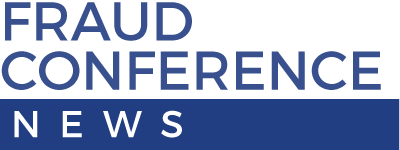Beyond the Fraud Triangle: Understanding Management Fraud Motives
/At the 36th Annual ACFE Global Fraud Conference, Dr. Rasha Kassem, CFE, this year’s ACFE Educator of the Year Award recipient, delivered an insightful presentation on the underlying motives behind management fraud. She emphasized how these motives can—and should—be integrated into organizations’ fraud risk assessments and audit processes.
Reframing Fraud Beyond the Triangle
Dr. Kassem urged attendees to move beyond the traditional Fraud Triangle model and consider a broader set of factors: motives, opportunities, rationalization, integrity, and capability. Among these, she highlighted motives as the most critical driver.
“No one commits fraud just for the sake of it,” she explained. “Motives are particularly significant in cases involving dishonest management intent on perpetrating fraud.”
Motives can be either financial—such as personal gain or pressure to meet performance targets—or non-financial, like personal grievances or ambition.
Opportunities arise when internal controls are weak or poorly enforced. A lack of integrity—a willingness to compromise ethical standards—can also make individuals more susceptible to committing fraud. As Kassem noted, integrity means "doing the right thing even when no one is watching,” and encompasses honesty, fairness, diligence, and respect for others.
Capability involves the means and confidence to commit fraud: authority to override controls, deep knowledge of financial systems, and a belief that one can avoid consequences, even if caught.
Kassem described management fraud as fraud committed by an organization’s leaders—executives and managers—often involving the theft or abuse of assets, manipulation of financial records, or corrupt practices.
“They have to have that drive to commit it,” Kassem said, noting that senior executives' power often enables them to override even robust internal control systems and avoid accountability.
A Framework for Assessing Management Fraud Motives
Kassem proposed a six-step framework for assessing management motives in fraud risk assessments:
Identify potential motives and vulnerable areas: Start by analyzing the organization’s operations to spot high-risk areas. Look for red flags and accounts susceptible to manipulation.
Observe management’s attitude: Evaluate ethical posture, openness, and behavioral patterns. Transparency—or lack thereof—can reveal significant insights.
Assess credibility of management’s claims: Cross-check management’s statements with objective evidence. Inconsistencies may indicate deeper issues.
Engage with management and governance bodies: Discuss how they assess fraud risks and examine how they address weaknesses or vulnerabilities.
Investigate whistleblower reports: Treat tips from employees or external parties seriously. These reports often provide early warnings about management’s behavior or ethics.
Brainstorm with peers or audit teams: Collaborate to identify potential motives and risks that might otherwise go unnoticed.
Management Attitude Under the Microscope
For fraud examiners, understanding management’s attitude is essential. Their responses to questions from CFEs, internal auditors, and external auditors can reveal their willingness to confront fraud risks and embrace transparency.
Kassem emphasized that a lack of cooperation, such as reluctance to share documents or answer questions, could signal efforts to hide misconduct. Similarly, management’s failure to act on audit findings suggests a lack of commitment to fixing control gaps.
She cited the Wirecard scandal as a cautionary example. Executives there not only misled auditors but actively undermined scrutiny—pressuring EY to limit audit scope, threatening journalists, and creating a toxic culture that silenced whistleblowers. They also used aggressive legal tactics to discredit critics and block negative media.
Other red flags include resistance to establishing a fraud policy or a code of conduct. Kassem advised fraud examiners to directly challenge managers who claim ignorance of fraud under their leadership: “If they don’t know what’s happening, ask them why not. Why aren’t they overseeing and monitoring?”
Building the Business Case for Integrity
For examiners investigating senior executives—especially those with a history of misconduct—Kassem recommended gathering primary data, including contacting law enforcement for white-collar crime records or using survey firms to trace prior convictions.
She also encouraged professionals to educate leadership about fraud. When management doesn't prioritize integrity, building a business case—emphasizing financial losses, reputational harm, and even business collapse—can be an effective motivator.
Kassem acknowledged the difficulty of confronting unethical leadership: “It can be tough, and you can lose your job doing it,” she told the audience. “But if someone’s not doing the right thing, stand up to them.”



